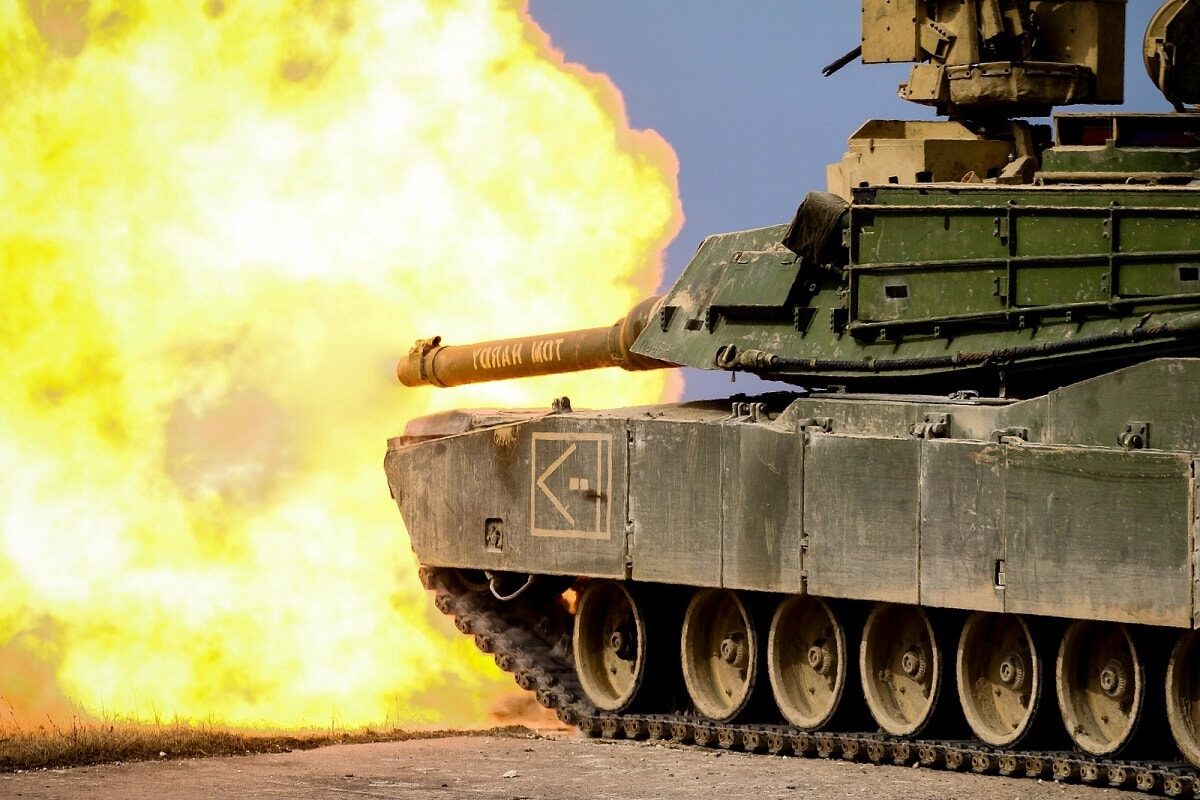The M1 Abrams is a legend for a reason. Russia’s invasion of Ukraine has highlighted the critical role main battle tanks still play in modern warfare.
Russia has sent a variety of Soviet-era armored vehicles to the front lines of the conflict, where they are often destroyed or captured by Ukrainian forces. While some experts estimate that Moscow might have lost half its modern tank fleet in the last fifteen-plus months of war, others paint an even bleaker picture for the country’s remaining arsenal of heavy weaponry.
To make matters worse for Russian forces, incoming shipments of advanced Western MBTs are expected to hit Kyiv’s front-line troops over the next few months. In addition to German Leopards and British Challengers, American-made M1 Abrams tanks will be delivered to aid Ukraine’s defensive efforts.
History of the Abrams Family
Few weapons in the U.S. armed forces have survived four decades in service without being replaced. The U.S. Army’s M1 Abrams tank is one of few platforms that has. Since the MBT’s entry to service during the Carter administration, the Abrams series has performed well in combat, and each successive variant has proven to be at the top in terms of capabilities. Initially developed by Chrysler Defense (nowadays General Dynamics), the first M1A1 Abrams model was designed to replace the M60 Patton.
The new Abrams tank came equipped with multiple advances, including Chobham composite armor. This sophisticated material made the tank extremely difficult to penetrate. Featuring an M256 A1 120mm smoothbore gun, the tank packs a punch. Its sports a 1,500-horsepower gas turbine engine and can reach a maximum speed of 42 miles per hour with a range of over 260 miles.
Over the last four decades, several Abrams variants emerged, each more sophisticated than the last.
The M1 Abrams Has a Proven Combat Record
When the Abrams first entered service, U.S. armed forces trained with NATO partners to prepare for a potential conflict with the Soviet Union and its Warsaw Pact allies. Following the dissolution of the USSR, however, the geopolitical landscape changed. The Abrams made its combat debut in the Middle East, where it countered Soviet tanks operated by Iraqi soldiers.
In 1991, nine M1A1 Abrams tanks were sent to conduct reconnaissance operations on the frontlines in Iraq. Led by Captain H.R. McMaster, the tanks were tasked with identifying Iraqi defensive positions without being drawn into direct engagement.
What McMaster did not know, however, was that a well-trained and well-equipped Iraqi brigade spotted the tanks and aimed to halt the American advance. In a later recounting of the battle, McMaster noted that, “The enemy commander, Major Mohammed, and his soldiers knew the ground well. The unit had used the village for billets as they conducted live fire training. Mohammed, who graduated from the Infantry Officer Advanced Course at Fort Benning, Georgia thought it was the ideal ground from which to defend.”
Despite the fact that the Soviet MBTs far outnumbered the American Abrams tanks, McMaster and his platoon devastated the enemy formation, destroying 47 tanks and 34 vehicles without a single loss.
The Abrams’ first experience in combat was undoubtedly a wild success, lending to the tank’s honorable legacy.
Maya Carlin, a Senior Editor for 19FortyFive, is an analyst with the Center for Security Policy and a former Anna Sobol Levy Fellow at IDC Herzliya in Israel. She has by-lines in many publications, including The National Interest, Jerusalem Post, and Times of Israel. You can follow her on Twitter: @MayaCarlin.
From 19FortyFive
Ukraine Footage Shows U.S. M982 ‘Excalibur’ Cut Through Russian Artillery
How To Sink A $3 Billion Dollar Submarine: Leave A Hatch Open
Smashed To Pieces: Video Shows Ukraine Hitting Russian Air Defenses

